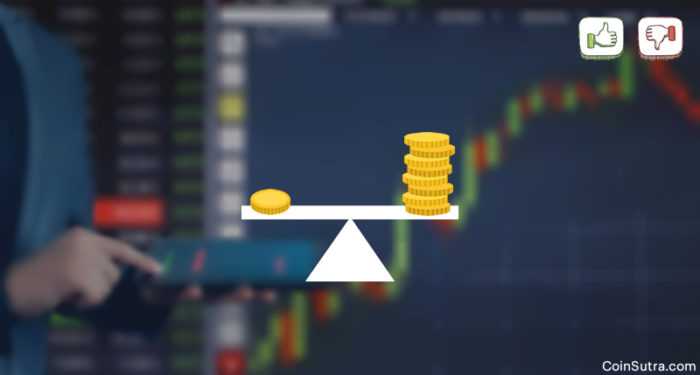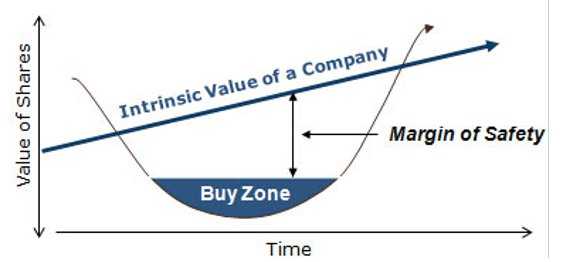
Trading stocks with margin can help you increase profits, but it can also increase losses. You can end up losing even more than what you invested.
By Guy Avtalyon
Before we analyze why trading stocks without margin could be a better idea for you, let’s see how you can trade without margin. I think it’s a proper way and order.
Let me explain to you one important thing. Nothing is wrong with trading on margin, it can increase your profits, but you have to be a very disciplined and skilled trader if you want to do that. Margin trading can increase your losses if you misuse it or use it at the wrong time. For example, it’s completely wrong to trade on margin if you’re greed or desperate. Honestly, trading stocks without margin could be a better idea for you.
What are your options for trading stocks without margin?
Of course, if you’re a day trader or want to become that, margin trading might be the only choice. But even then, you can trade stocks without margin, and here are some tips on how to do that.
It is allowed to have four trades per week (three trades per five days is the PDT rule), and you can still avoid the brokerage firm to tag you as a day trader. For example, if you have sufficient cash, you don’t need a margin. Meaning you don’t need to borrow money from your broker. You need to open several accounts, for example, four with a balance of $6,000. That will give you a chance to place 16 trades per week.
For me, it’s absurd, but you might be able to maintain four accounts every day. In my opinion, it’s too many accounts to manage at the same time. But, who knows, maybe you’re capable of doing so. There are some other possibilities, but I wouldn’t waste your time on them as they are not working in reality.
What is essential in trading stocks without margin?
Keep in mind; you do not need to make it all in one day. Instead, think about trading stocks as a permanent and long-lasting job. Let me explain to you one idea. Let’s say you have a $25,000 account and want to use that cash for trading stocks? I can hear your question: Why should I trade $100,000 if I can use the full advantage of $400,000? How can I earn?
So, you may think it’s a stupid idea. Just read the rest of this post, and at the end of it, we’ll be on the same page.
I want you to honestly ask yourself the question: Why do I want to earn quickly? No, you don’t need to tell me. Just be honest with yourself. Why is it so hard for you to recognize time as an advantage? Can you trade slower? Of course, you can!
Trading with cash carries a lot of advantages.
For example, it gives you a chance to become a moneymaker, and I’ll show you how to do that. You’ll become one of 10% elite traders.
Without any doubt, trading stocks with a margin when the market is going against you is the most stressful situation. Let’s say you’re holding a long position on the stock with a 60% cash requirement. At the same time, you hold two more positions that also go against you.
What are you going to do? Get panicked? Are you confident with your stop-loss orders? Will you stick with them? Are you going to follow and respect your strategy?
If you’re trading for some time, you noticed the markets fall faster than they go higher. It’s fear. The fear can shift into a panic very fast. What could get you more pain in such circumstances is a margin. Your hard-earned profit could quickly vanish in minutes. Instead of holding a position, it’s much better to sell winning stocks and exit with profit.
Also, brokerages will never give you money for free; they will charge you interest. They are profiting from lending you cash. So, that’s the reason why they will always offer you to trade stocks with margin. What is best for you to do is to decline such an offer. If you’re honest enough, you will never find a reason to put yourself in a situation to pay interest and have more losses.
You’ll end up in debt. Instead, put some more effort into earning cash and trade stocks without margin.
Can you trade stocks without margin?
You can trade stocks without margin only if you have enough capital to open trades. In other words, you must have a sufficient deposit on your trading account.
Trading with margin can be dangerous for beginners. But the fact is that the PDT rule isn’t implemented in cash accounts. That’s the point. If you use your cash account, you can make as many trades as you want, but the catch is that it has to be settled cash. But it isn’t a problem necessarily. If you treat trading stocks as a long-term job and not a quick profit scheme, your cash account provides you a straightforward way to make money from your trades. Also, one of the advantages is that you don’t need to worry about PDT. Sounds fair enough.
Trading tricks
If you don’t have $25,000 to trade stocks, you still have alternative trading strategies. I’ll be honest with you, and they are far from perfect. One is to have four trades per week instead of three trades in five days. Also, you can trade stock on the foreign markets. After you do some in-depth research, I’m sure you’ll find the differences and benefits. You’ll find the market that fits your trading needs.
You might also choose swing trading to enter trades that you can hold for longer than one day. This way isn’t a classic trick, it’s more strategy, but it’s a good opportunity for the traders who can’t meet the $25,000 requirement.
Also, you can open more than one account with different brokers. You’ll trade small and produce smaller income, but you’ll have more trades and the possibility to earn practically more.
Frankly, all these tricks are far better than the trading stock with margin.
Let’s say you have $15,000 in your margin account, and you want to buy a stock that costs twice more than you currently have. Your broker is willing to give you a margin. After you buy stocks worth $30,000, you’ll own them, but also, you’ll owe your broker $15,000. You’ll make a profit if the stock price increases. Your profit would be bigger than if you bought stock with your money, that’s true. But if the price decreases, your loss would be more significant with margin trading than if you purchased stock with cash.
Anyway, borrowing from brokers isn’t always straightforward; borrowing from brokers is as binding as banks.
Can you see why trading stocks without margin is a better choice?




